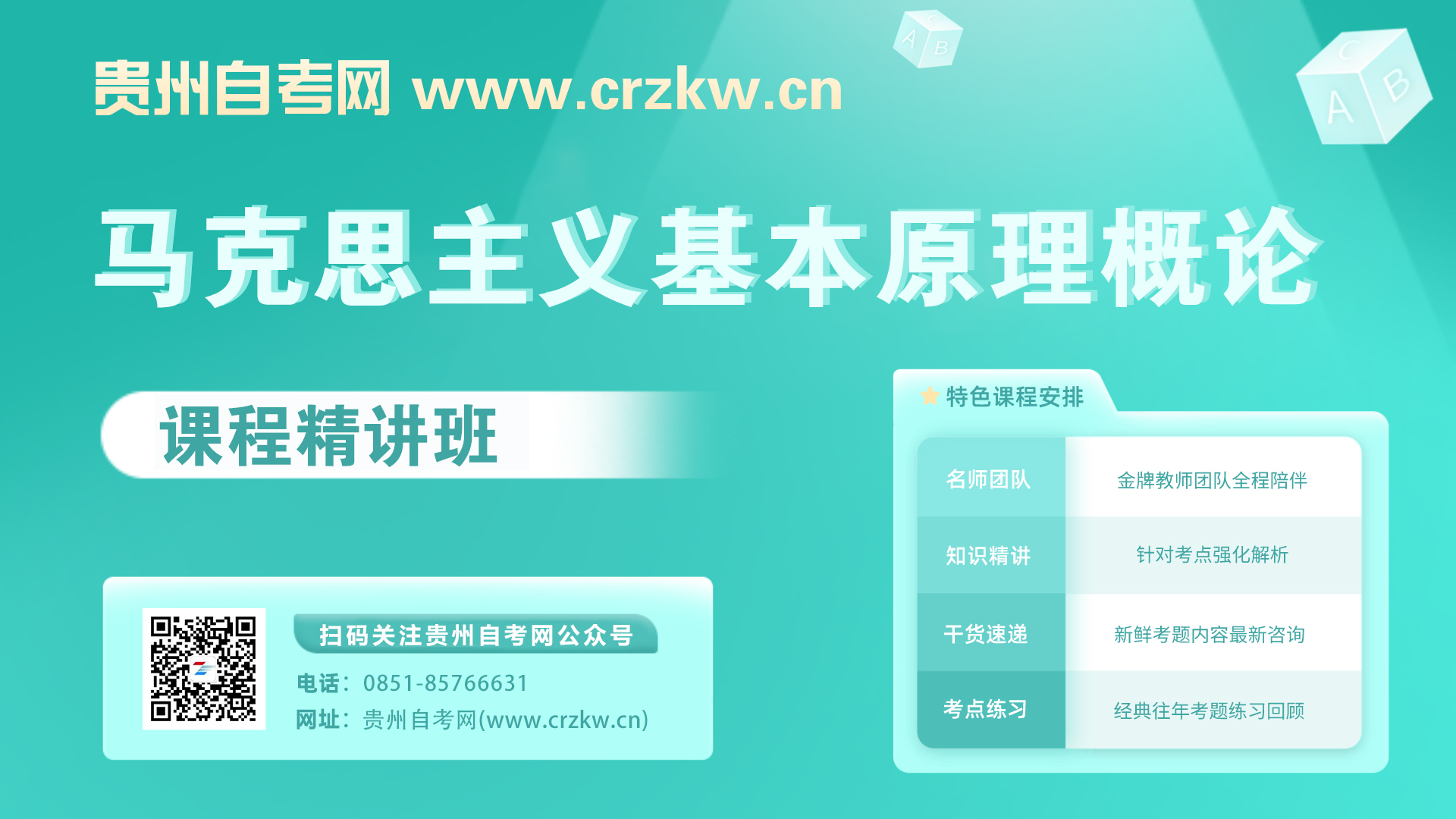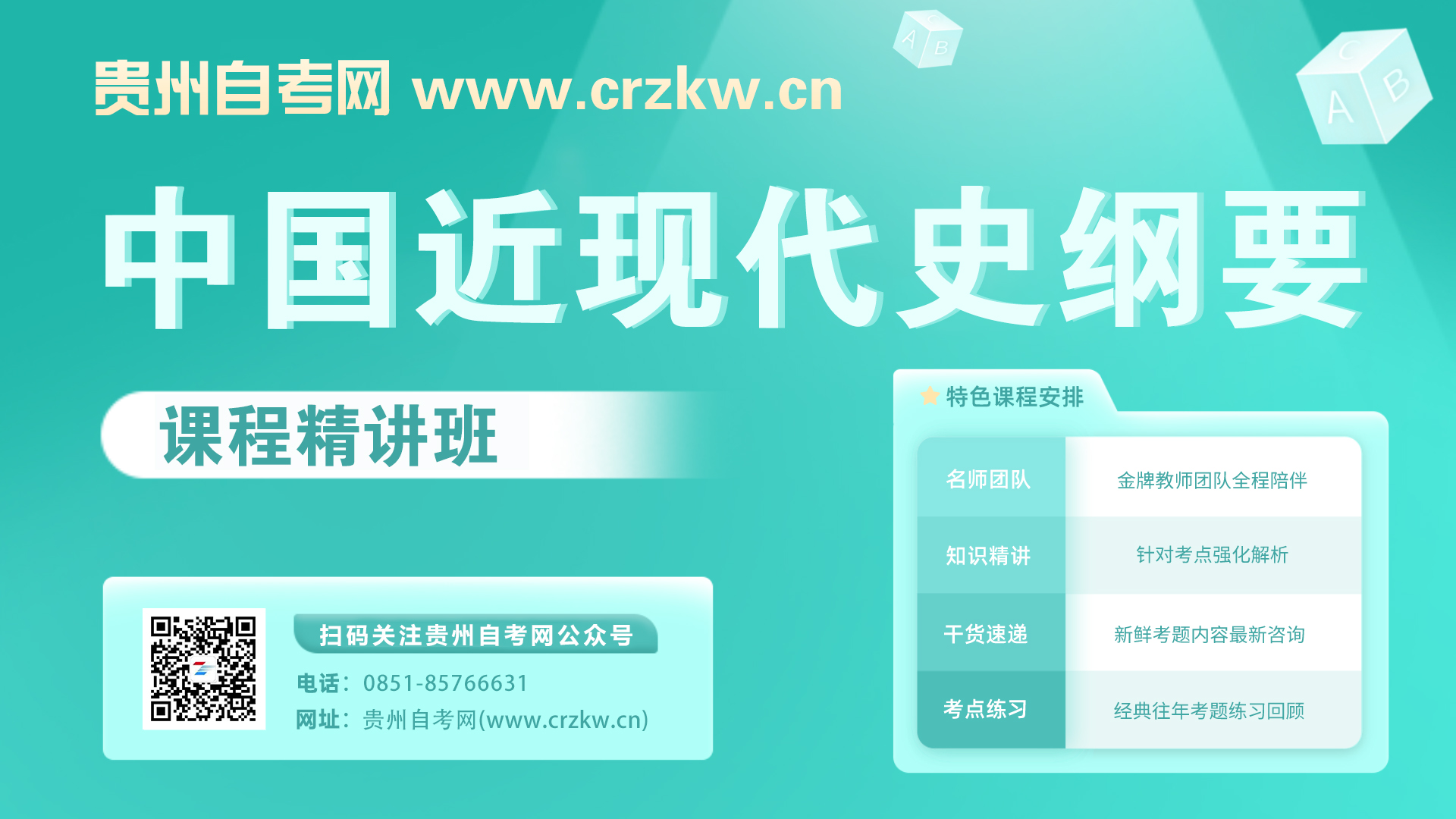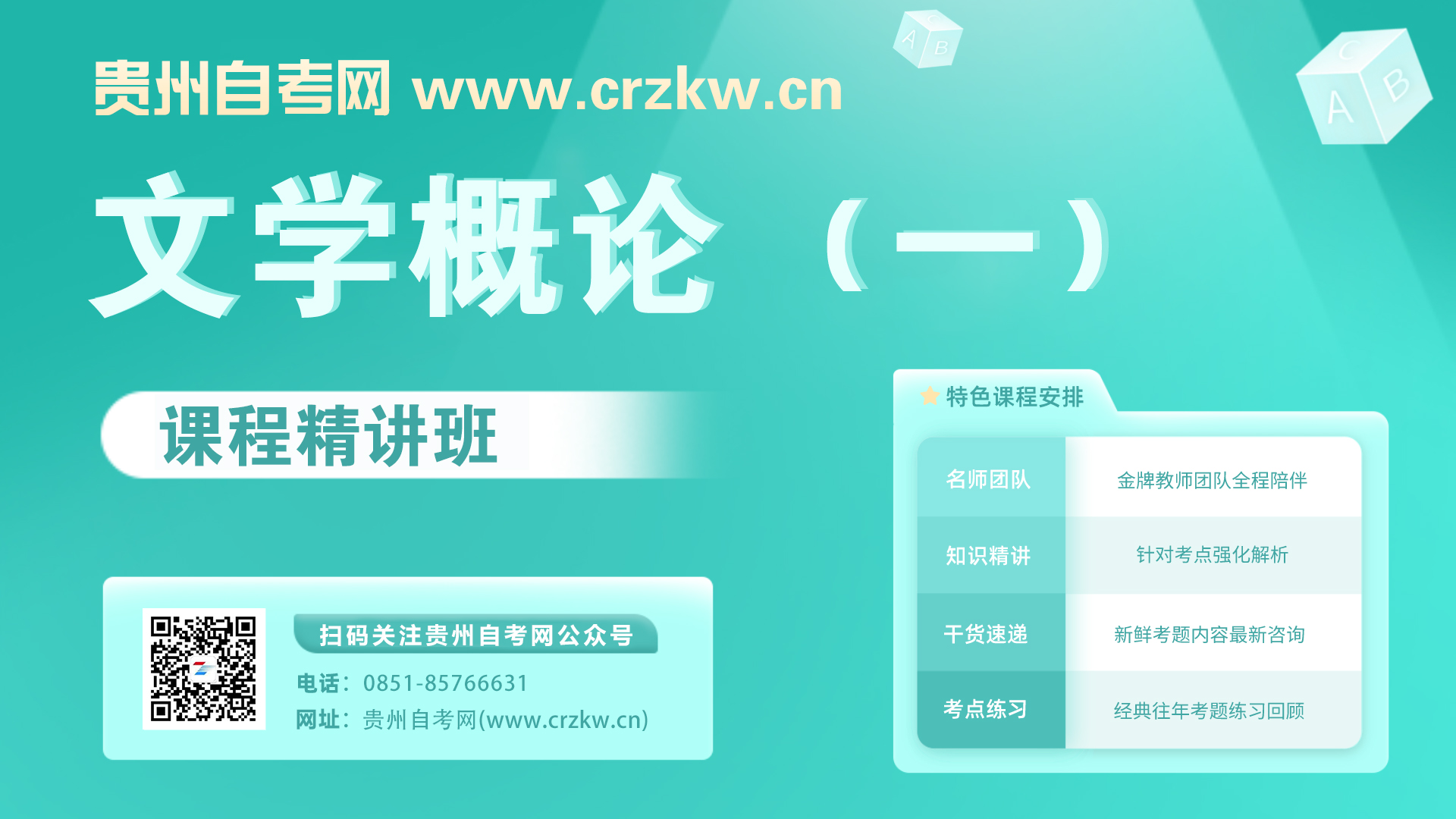2020年贵州自考《英语教学论》习题及答案
编辑整理: 贵州自考网 发表时间: 2020-05-29 【大 中 小】 点击数:
2020年贵州自考《英语教学论》习题及答案
简答题
1. How do you understand the difference between approach, method, and technique?
2. What are the three views of language that support popular foreign language teaching?
3. What are the elements with which a method is concerned?
4. What are the points of concern of methodology?
5. Apart from a mastery of a foreign language, what other knowledge should a foreign language teacher have in order to do his/her job well?
6. In what sense can an understanding of the context of education contribute to language teaching and learning?
7. Why do we say assessment has great backwash effects on foreign language teaching and learning?
8. What is the difference between Skinner’s behaviorism and Chomsky’s mentalism?
9. Does Krashen’s theory of second language acquisition begin with theories, or with data?
10. What is the role of formal learning according to the monitor hypothesis?
11. According to Krashen, there is only one way for human to acquire language. What is it?
12. What is the function of the affective filter?
13. What are some of the main stages of a lesson?
14. What is the focus of a Grammar-Translation classroom?
15. What language skills are emphasized by the Grammar-translation Method?
16. What are the main techniques used in a Grammar-Translation classroom?
17. What specific aspects does communicative competence include?
18. What language skills are emphasized by the Direct Method?
19. How should language rules be learned according to the Direct Method?
20. Why is first language forbidden in a Direct Method classroom?
21. How can we describe the main proficiency goal of the teaching and learning of pronunciation?
22. What kind of words tend to be stressed, and what kind of words tend to be unstressed?
23. Why should we teach pronunciation and intonation in context?
24. What are the two functions of intonation?
25. What are the techniques which you can use to teach intonation in a meaningful way?
26. What kind of knowledge do you need to have if you say you know a word?
27. What are the three main forms of word building in English?
28. How do you decide whether a word should enter the students’ active or passive vocabulary?
29. What are the six principles to remember when presenting new vocabulary in class?
30. What tricks can a teacher teach his students to use to memorize vocabulary?
31. What is the relationship between the grammatical forms of a language and their communicative functions?
32. What are the three different views on grammar teaching?
33. What is the major difference between deductive learning of grammar and inductive learning of grammar?
34. What are the two objectives in presenting a new structural item?
35. What are the factors that contribute to successful practice of grammar?
36. Why is listening important in learning English?
37. What’s the difference between casual listening and focused listening?
38. What are some of the advantages of using a cassette recorder?
39. What kind of questions should we ask our students when we want to give them a reason to read?
40. Why do we say that reading aloud is not very useful for reading a text in class?
参考答案
1.When we use the word approach we mean that an idea or theory is being applied: that whatever the teacher does, certain theoretical principles are always borne in mind. A method is a set of procedures or a collection of techniques used in a systematic way which it is hoped will result in efficient learning. When we talk about a technique, we mean a procedure used in the classroom.
A technique then is the narrowest term, meaning one single procedure. A method will consist of a number of techniques, probably arranged in a specific order. The word approach is much more general and has the implication that whatever method or techniques the teacher uses, he does not feel bound by these, but only by the theory in which he believes. If he can find new and better methods or techniques which will fit in with his approach, then he will adopt these.
2.They are the structural view; the functional view and the interactional view.
3.There are six elements:
1. the nature of language;
2. the nature of language learning;
3. goals and objectives in teaching;
4. the type of syllabus to use;
5. the role of teachers, and instructional materials; and
6. the techniques and procedures to use.
4.The points of concern of methodology include:
a. the study of the nature of language skills (eg. reading, writing, speaking, listening) and procedures for teaching them
b. the study of the preparation of lessons plans, materials, and textbooks for teaching language skills
c. the evaluation and comparison of language teaching methods (eg. the Audiolingual Method)
d. such practices, procedures, principles, and beliefs themselves. (Richards, et al, 1985: 177)
5. He/she should have some knowledge about the related subjects such as linguistics, psychology and pedagogy. He should also know that a lot of variables influence classroom teaching. Factor like foreign language education policy, the goal of foreign language education, learners, teachers, syllabus, teaching method, teaching materials teaching aids, and assessment and evaluation all influence classroom teaching. If a teacher does not know them he would not be able to teach according to the circumstances and would achieve the best results possible.
6. Teaching and learning a foreign language inevitably involves relationships between different aspects of life, and teaching English successfully is not just a question of method. Other things influence English language teaching (ELT) greatly. Refer to the nine variables discussed in the text.
7. Both positive and negative backwash effects. Assessment can provide teachers with feedback for lesson planning and remedial work. Students can also get information about their learning and progress, therefore have a sense of achievement. Through assessment they get to know their problems and areas for further study and improvement. However, inappropriate assessment can cause worries, discourage weak students, emphasis on grades instead of on abilities and competence, etc.
8. Where behaviorism ignored the contribution of the child itself in the learning process, mentalism has practically denied that linguistic input and environment play a role in this process, and has generally paid very scant attention to the actual course language development takes.
9.Krashen’s theory of second language acquisition begins with theories or assumptions, not with data. He used a deductive method, that is, he set up a number of hypotheses first, then collected information or data to support/refute his hypotheses.
10.The monitor hypothesis states that formal learning has only one function, and that is as a "monitor” or "editor” and that learning comes into play only to make changes in the form of our utterance, after it has been produced by the acquired system. Acquisition initiates the speaker’s utterances and is responsible for fluency. Thus the monitor is thought to alter the output of the acquired system before or after the utterance is actually written or spoken, but the utterance is initiated entirely by the acquired system.
11. By understanding meaningful messages or comprehensible input; the formula is i + 1.
12. According to the affective filter hypothesis, comprehensible input may not be utilized by second language acquirers if there is a "mental block” that prevents them from fully profiting from it. The affective filter acts as a barrier to acquisition: if the filter is "down”, the input reaches the LAD and becomes acquired competence; if the filter is "up”, the input is blocked and does not reach the LAD. Thus "input is the primary causative variable in SLA, affective variables acting to impel or facilitate the delivery of input to the LAD.”
13. Here are some of the main stages of a lesson:
a. Presentation: The teacher presents new words or structures, gives examples, writes them on the board, etc.
b. Practice: Students practice using words or structures in a controlled way. Practice can be oral or written.
c. Production: Students use language they have learnt to express themselves more freely. Like practice, production can be oral or written.
d. Reading: Students read a text and answer questions or do a simple task.
e. Listening: The teacher reads a text or dialogue while the students listen and answer questions, or the students listen to the tape.
f. Revision: The teacher reviews language learnt in an earlier lesson, to refresh the students’ memories, or as a preparation for a new presentation.<0225>
14.The focus of a Grammar-Translation Method is grammar. The process of learning grammar is considered an important means of training mental abilities. The teaching materials are arranged according to the grammatical system.
15.Reading and writing are emphasized because literary language is regarded as superior to spoken language and is therefore the language students should study. This emphasis on reading and writing skills also results from the purpose of learning Latin: to read and translate the classical literature of Latin.
16.A Grammar-Translation teacher usually uses the following techniques to help realize the course objectives: 1) Reading, 2) Translation, 3) Deductive teaching of grammar, 4) Analysis and comparison, 5) Memorization, 6) Reading comprehension questions, and 7) Written work such as fill-in-the-blanks, using new words to make up sentences, and so on.
17.Communicative competence includes:
a) knowledge of the grammar and vocabulary of the language,
b) knowledge of rules of speaking (eg. knowing how to begin and end conversations, knowing what topics may be talked about in different types of speech events, knowing which address forms should be used with different persons one speak to and in different situations),
c) knowing how to use and respond to different types of speech acts, such as requests, apologies, thanks, and invitations,
d) knowing how to use language appropriately.
18.Conversational skills are emphasized, though the teaching of all four skills is considered important. Reading and writing exercises should be based upon what the students have practiced orally first. Pronunciation is paid attention to from the beginning.
19.Language rules are learned inductively through listening and speaking activities. The teacher sets up a few carefully chosen illustrations of a rule and leads the students to discover the relationship of the new elements to others previously learned. Students work out the rule governing those examples. In other words, students have to induce grammatical rules from examples in the text. A language could best be learned by being used actively in the classroom.
20.The direct methodologists view foreign language learning as similar to first language acquisition. The learner should try to establish a direct association between language form s and meanings in the target language. Mother tongue is considered as an interfering factor, rather than a reference. In order to develop the students’ ability to communicate in the target language, students should be encouraged to think in the target language. The best method is not to make the learn the rules, but to provide direct practice in speaking and listening through imitation and repetition. The best method to teaching meaning is to make the students listen, look, and say, i.e. using sensory experience.
本文标签:贵州自考 英语教学论 2020年贵州自考《英语教学论》习题及答案
转载请注明:文章转载自(http://www.crzkw.cn/)
⊙小编提示:添加【贵州自考网】招生老师微信,即可了解2025年贵州自考政策资讯、自考报名入口、准考证打印入口、成绩查询时间以及领取历年真题资料、个人专属备考方案等相关信息!

(添加“贵州自考网”招生老师微信,在线咨询报名报考等相关问题)

贵州自考网声明:
1、由于各方面情况的调整与变化,本网提供的考试信息仅供参考,考试信息以省考试院及院校官方发布的信息为准。
2、本网信息来源为其他媒体的稿件转载,免费转载出于非商业性学习目的,版权归原作者所有,如有内容与版权问题等请与本站联系。
贵州自考便捷服务
- 微信交流群
- 微信公众号

微信扫一扫加入考生微信群
①学习交流、②考试提醒、③自考解答
④自考资料、⑤新闻通知、⑥备考指导

贵州自考网微信公众号
随时获取贵州省自考政策、通知、公告
以及各类学习微信公众号
- 热点文章
- 常见问题






